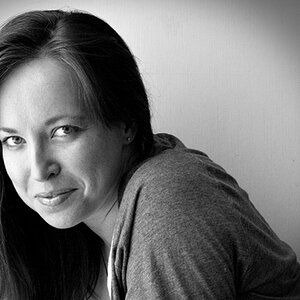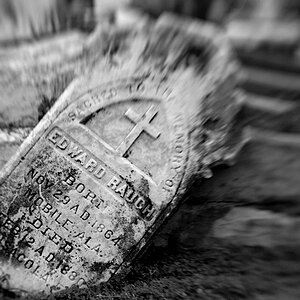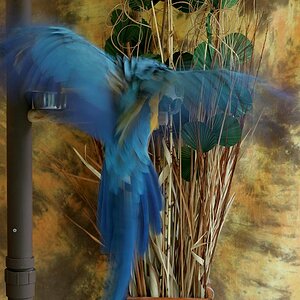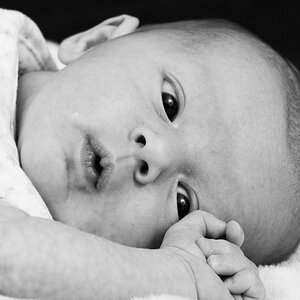julie32
TPF Noob!
- Joined
- Jun 25, 2007
- Messages
- 354
- Reaction score
- 0
- Location
- New York City
- Website
- www.juliestarkphotography.com
- Can others edit my Photos
- Photos OK to edit
Hi guys,
I need some basic assistance. Trying to take a photo in really bad inside flourescent lighting of a person about 5 feet from me and then a person behind them an additional 2-3 feet. For the life of me, I couldn't get them both in focus. (I shoot with a canon 5d, 580 ex, 24-70 2.8). I tried increasing the ISO but I didn't want graininess..... I settled at 400. I tried decreasing my F-stop, but the shots were too dark.
How should I have approached this?
Thanks for any help you may provide
julie
I need some basic assistance. Trying to take a photo in really bad inside flourescent lighting of a person about 5 feet from me and then a person behind them an additional 2-3 feet. For the life of me, I couldn't get them both in focus. (I shoot with a canon 5d, 580 ex, 24-70 2.8). I tried increasing the ISO but I didn't want graininess..... I settled at 400. I tried decreasing my F-stop, but the shots were too dark.
How should I have approached this?
Thanks for any help you may provide
julie





![[No title]](/data/xfmg/thumbnail/41/41797-ed370d68dae70f5b0a7252ec2d525912.jpg?1619739896)



![[No title]](/data/xfmg/thumbnail/42/42328-c1143adda9734f7d05ce4361e79c27a7.jpg?1619740129)

![[No title]](/data/xfmg/thumbnail/42/42329-331b54ea6493a8cdd21d8e624fe97e85.jpg?1619740129)
![[No title]](/data/xfmg/thumbnail/42/42326-1e75ade9716f7e863d85def8d13cf591.jpg?1619740127)
![[No title]](/data/xfmg/thumbnail/42/42327-560f11a37bb209e9091c0fc9e1028cdc.jpg?1619740128)